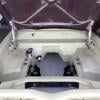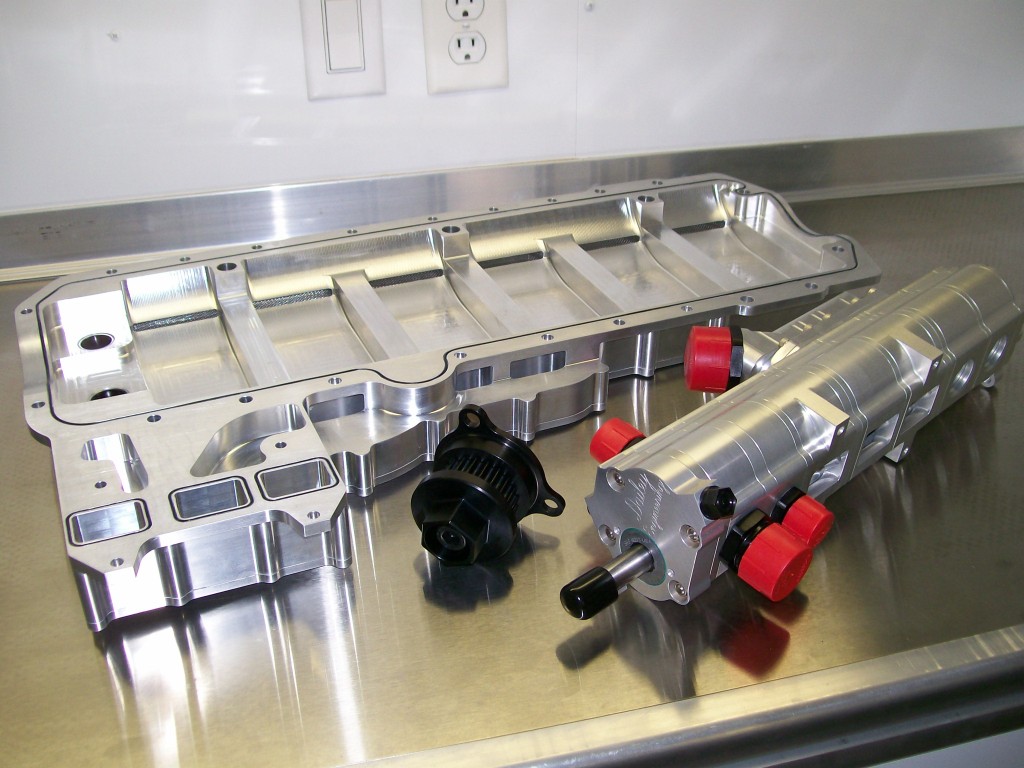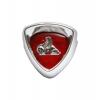
Dry sump
#1

Posted 11 March 2018 - 04:39 PM
Cheers Maz.
#2

Posted 11 March 2018 - 05:15 PM
For registered on the road use you mean?
As far as I know yes, I can't see any reason they wouldn't be?
Edited by Bigfella237, 11 March 2018 - 05:16 PM.
#3

Posted 11 March 2018 - 05:36 PM
Im putting jz block in the lj.sump is off
And block is sitting on kframe and box is
hitting in tunnel.2 kill 2 birds with one
stone would just get the dry sump pan for
now then purchase 5he rest at a later date
as i want to paint engine bay and forgot
about sorting the clearance issues.sorta
got caught up with the hype of priming and
painting and forgot everything else.
#4

Posted 11 March 2018 - 06:15 PM
Just re-reading NCOP3_Section_LA_Engine and the only mention of a sump in that document is with regard to clearance, no mention of dry sump systems whatsoever, and I can't see any other sections of the NCOP that might cover it.
The only thing I'd say the authorities would be worried about is occupant safety, so you wouldn't run a scorching hot hard line right past the passengers leg for example, or have any risk of a hose bursting and squirting an occupant, or have any kind of breather venting inside the car (including in the boot).
If it were me I'd just follow the same guidelines as set out for fuel tanks, such as all components at least 100mm inboard of the permanent bodywork, minimum ground clearance and departure angles, etc.
If you have a choice I'd say mount the tank in the boot on the passenger's side for weight distribution, although even full most oil tanks weigh less than an average sized battery but still, 10 litres of oil weighs about 8.7kgs, and each run (say 2.5m) of -12AN hose holds about another 0.7 litre, that's about 1.2kgs of oil in the hoses alone. All things to keep in mind when you get up to that stage.
#5

Posted 12 March 2018 - 03:13 AM
to look in there.am making a little
hiding spot for battery very similar to the
rhs tire footwell on lhs.the oil tank could
reside there.but honestly i havnt given it
much thought or where it will go.ive looked at there designs and most are round.if it was
square i wonder if i could put it just behind headlight on lhs no lines going to boot etc.
The bottom cast pan is 63-64 mm thick with
sump off..daily engineering make one 2" thick
so thats 13-14mm gain.i know not much.theres
no hoses from pan to pump.a direct fit to the side which is pretty cool.titan motorsports
is same 50mm but the scavenge ports if it was
a 2 stage would go in front of the kframe and
id gain an inch i reckon..both kits are 4600
and 4300..last pic is titans..
 20180311_144151.jpg 132.37K
3 downloads
20180311_144151.jpg 132.37K
3 downloads ds_2048x2048.jpg 32.03K
2 downloads
ds_2048x2048.jpg 32.03K
2 downloads ds8_2048x2048.jpg 48.76K
2 downloads
ds8_2048x2048.jpg 48.76K
2 downloads titanmotorsports_2272_533802970.jpeg 74.65K
3 downloads
titanmotorsports_2272_533802970.jpeg 74.65K
3 downloads
#6

Posted 12 March 2018 - 10:07 AM
Most tanks are round as they use a swirling spiral action to help de-aerate the oil...

I have seen square and rectangular tanks as well as some really odd shaped ones...

...and you can get dedicated de-aerators such as this one from Spintric...

...and ARE...

#7

Posted 13 March 2018 - 02:37 AM
I have used several of the Dailey units for Chevy / LSX and workmanship and design is brilliant.
The 2JZ Dry sump

Cameron
#8

Posted 13 March 2018 - 11:03 PM
to me and can purchase the billet pan for
1850 .i think thats usd too so $2543 and
130 usd to post. I hope it isnt ..lol.. Titan hasnt bothered to answer my 2 emails so bugger them.ive taken sump right off and its 61mm
thick.
Only an 11mm gain and dry sump hasnt any
clearance yet.nor the engine at its 2 deg.
its spose to be? .undecided if i should get
it.do you know the angle the engine has to b Andrew..i spose it has to b near level for
pump to scavenge the oil??
Edited by madtoranajzedded, 13 March 2018 - 11:04 PM.
#9

Posted 14 March 2018 - 11:13 AM
Don't forget you also have to pay 10% GST (on the purchase price AND shipping costs) plus whatever fees they charge for collecting it.
Most cars are designed at around 3° trans down (when looking from the side), if carburetted with an off-the-shelf inlet manifold you're pretty much stuck with that to keep the carb level. Race cars (and I guess anything EFI) can be setup anywhere from there to 3° trans up, which gives better weight transfer to the rear when drag racing etc., you just have to setup the diff to suit, bearing in mind that uni joints don't like working in a straight 0° line.
However I don't think either end of that range would matter for a dry sump, most have at least three pickups and grooves machined into the base of the pan to collect and channel the oil as they have to be able to scavenge at high G's in any direction in race applications, accelerating, braking and cornering, a 3° angle is nothing compared to a car pulling a wheelie off the line! Although I suppose you'd be better off to ask the manufacturer before you hand over your hard-earned bucks just to make sure?
You have to remember that the pump sucks just as much air as it does oil, in fact it doubles for a vacuum pump and takes care of any crankcase ventilation too, meaning you won't need to run any of the factory PCV gear. Hence the need for de-aerating the oil as its dumped into the tank.
#10

Posted 15 March 2018 - 01:50 AM
your take on how sump work.i reckon youd b
spoton..ok ive had a little go on getting
engine level and not far off..if engine is
level the diff has to b level aswell for them
to cancel ea other out??.i was going to setup
at 2-3deg and same with diff as i thought
they have to have that.so say on accelleration
from standing start does the diff go upwards?
I just trying to understand how it works
and what i have to do...i hate reading lol
I only like looking at pictures 😂😂😂
Edited by madtoranajzedded, 15 March 2018 - 01:51 AM.
#11
 _Bomber Watson_
_Bomber Watson_
Posted 15 March 2018 - 09:28 PM
Maz, watch this.
#12
 _duggan208_
_duggan208_
Posted 15 March 2018 - 10:44 PM
Thanks mate, I had no idea of that.
Regards
#13

Posted 01 April 2018 - 09:07 PM
If mounting oil tank in boot, min -16 hose size on both pump and scavenge, dailey recommend -20 on return.
You need the volume of oil on back side of pump for it to generate the pressure without cavitating.
You can set up the system to create vacuum in crankcase, not everyone does this. To do this will need a vacuum regulator on engine, max vacuum should be about 12 inches, more than this sucks the oil vapour out of the air and drys out the piston pins, if using piston oil squirters can go alot more vacuum.
Running vacuum is a good way to pick up some hp too.
Another little tip with vacuum setups which can be hard to find info on, not many know about this, coz the engine is a sealed unit, when cranking for start, idle or even when coming off a wide open moment back to idle, the pump can sometimes not generate enough or any vacuum, instead it creates internal pressure so a one way valve on a rocker cover that blows off at a very low pressure but seals under vacuum can be needed, unexpalained oil leaks can be seen if you dont.
Some engines eg chev you can buy vacuum specific seals, rear main, front main to seal in opposite direction to normal.
Pump speed is critcal, all pumps have a efficeient operating window, if buying a kit they generally do the work for you, otherwise ask them, the good companies are happy to assist with pump ratio.
#14

Posted 01 April 2018 - 11:50 PM
https://youtu.be/noO16P5vSwQ
Cameron
#15

Posted 02 April 2018 - 05:01 AM
Interesting side note, if you monitor crankcase vacuum you can detect detonation by watching for vacuum fluctuations... old skool knock sensor!
1 user(s) are reading this topic
0 members, 1 guests, 0 anonymous users















